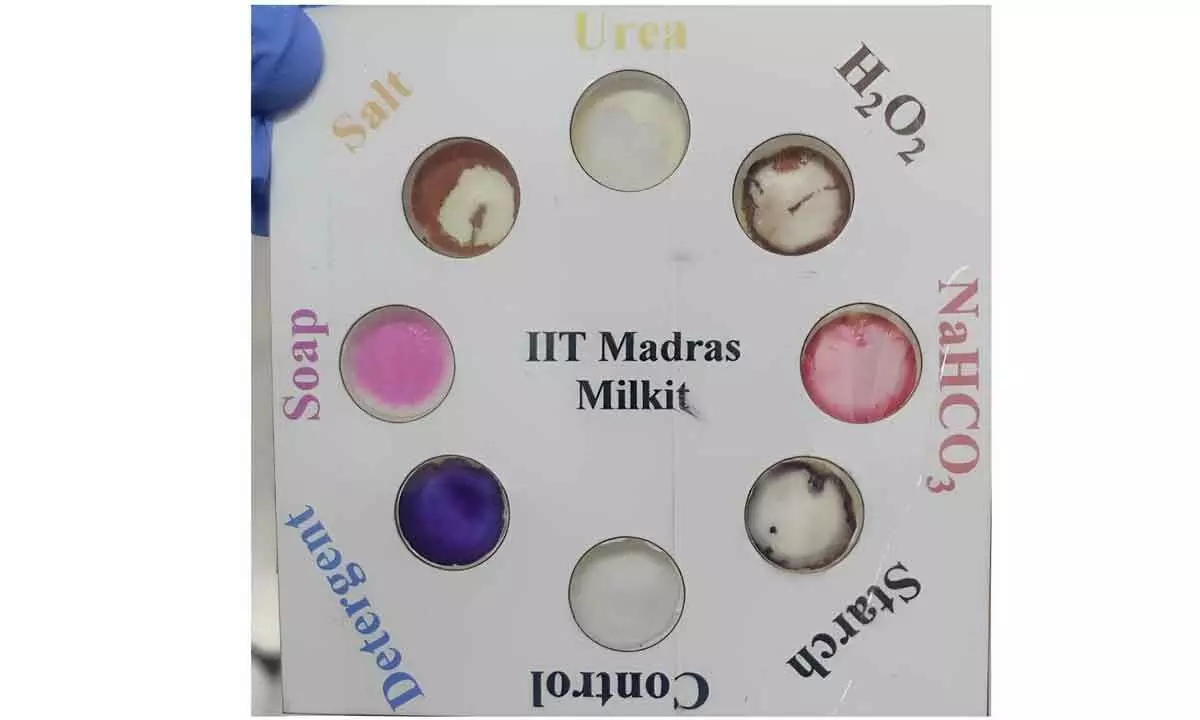Live
- Jeene Ki Tamanna: Sumathi’s inspiring journey
- Depression in Bay of Bengal weakens, slight rains likely in parts of AP
- Thiruppavai – A Rhapsody in Devotion
- Station consultative panel aims to enhance quality rail service
- Elephant rescue centre to be set up in Chandragiri
- Bhadrak yarn project will boost economy: CM
- Daily Horoscope Report for December 22, 2024: Explore Your Astrological Guidance for Today.
- Best Car Models of 2024
- Revanth warns hate mongers
- Three held in minor’s rape case
Just In
IIT M's 3D portable device to detect milk adulteration


The device can detect multiple substances commonly used as adulterating agents including urea, detergents, soap, starch, hydrogen peroxide, sodium-hydrogen-carbonate and salt, among others
Worried that your glass of milk might be adulterated? A novel three-dimensional (3D) paper-based portable device developed by researchers at the Indian Institute of Technology (IIT) Madras can help you detect adulteration within 30 seconds, all while sitting at your home.
The device can detect multiple substances commonly used as adulterating agents including urea, detergents, soap, starch, hydrogen peroxide, sodium-hydrogen-carbonate and salt, among others.
Unlike conventional laboratory-based methods to test the purity of milk, which are both expensive and time-consuming, the new technology is affordable and could also be used to test other liquids such as water, fresh juices, and milkshakes for traces of adulteration.
According to the team, only a millilitre of any liquid is required to test for adulterants.
"The 3D paper-based microfluidic device is made up of a top and bottom cover and a sandwich structure middle layer. This 3D design works well for transporting denser liquids at a consistent speed," said Dr. Pallab Sinha Mahapatra, Department of Mechanical Engineering, IIT Madras, in a statement.
He explained that the paper is treated with reagents and is left to dry. Both paper layers are adhered to both sides of the support after drying, and the covers adhere with double-sided tape.
Whatman filter paper grade 4 was used in this design, which aids liquid flow and allows for the storage of more reagents.
"All the reagents are dissolved either in distilled water or in ethanol, depending upon their solubility.
Using colorimetric detection techniques, all the adulterants are detected in different liquid samples," Mahapatra said.
The research, published in the peer-reviewed journal Nature, showed that the reagent only reacts with the specific adulterant in this method and not with any milk ingredients.
"Hence, this analytical tool can help to monitor liquid food safety and thereby increase the traceability of tainted milk in remote areas of developing countries," Mahapatra said.
Milk is one of the most vital foods important to lead a healthy lifestyle and yet is the most adulterated food item in the world.
The adulteration of milk is a growing menace, especially in developing countries like India, Pakistan, China, and Brazil. Consumption of adulterated milk could cause medical complications such as kidney problems, infant death, gastrointestinal complications, diarrhoea, and even cancer.

© 2024 Hyderabad Media House Limited/The Hans India. All rights reserved. Powered by hocalwire.com






